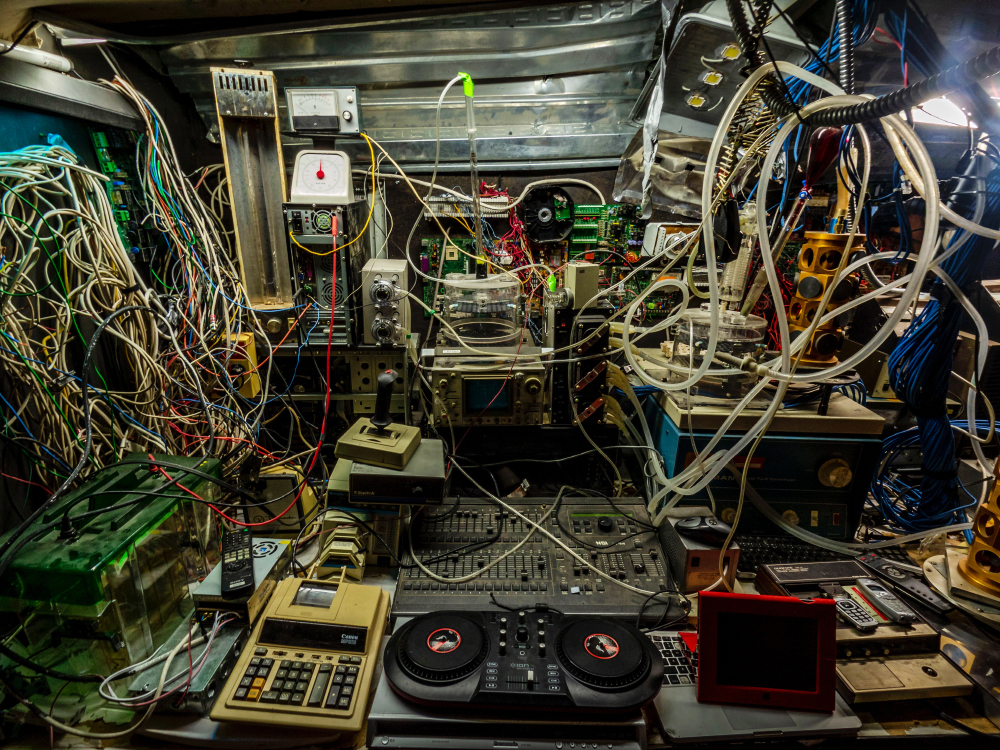You’re probably familiar with the proverb, “If you want to go fast, go alone. If you want to go far, go together.” And one place where that still applies is the tech booth at church.
It’s much easier to just get something done and take on a job than it is to find and train others to share the load. But after you find volunteers to train, you have to convince them that running sound isn’t too difficult for them to learn.
One place where we can lose people is with a complicated setup. Believe me, I love three-way parallel compression, side-chain ducking and drum replacement as much as the next person (maybe more), but if a setup is too complicated for a newbie to learn, it will drive away more people than can be recruited.
So how do we keep things simple so that it’s easy to learn? It takes a lot of work and some compromises, but we can choose the way we set up our system so our team can grow and multiply.
Console Layout
One of the first places people come when they want to learn sound is the sound booth. Yes, we train them on how to set up the stage and troubleshoot inputs, but if people can understand “fader go up, make loud,” they’ll get their first taste of confidence that they can do this job.
Your faders and DCA groups should be laid out in a way that’s logical and easy to understand for a new person. (Mike Sessler has a great article on channel layout and organization available on ProSoundWeb that’s really worth a read.) But what’s important is that you have an organized system, and it has some relationship to what the sound tech sees on stage.
I think DCAs (or VCAs, depending on your manufacturer’s nomenclature) are a great organization tool that adds minimal complexity but a huge benefit of control. It’s helpful to have these in the same order as your inputs appear on the console so the visual elements remain consistent. They also help with fading in and out large groups of faders during the times the service transitions from music to spoken word and back again.
Though mute groups can do the same thing, the sudden on/off transition with mute groups is more of a distraction. With our new volunteers, we want to make it easy for them to avoid a “sound tech solo.” So for me, DCAs are worth the added complexity.
Since we’re talking consoles, I have to urge you to get a console with enough faders that most of your important channels can be accessed on a single layer. Pushing buttons to switch between layers adds an extra step for tasks that should be quick.
Knowing Limitations
Another place where we tend to make things overly complicated is when we stretch our equipment beyond the limits it was designed for. Maybe your monitoring system is trying to put too many people on too-few aux sends. Maybe you’re trying to cram too many inputs in your console because you added a tuba quartet when you were already out of inputs.
Either way, recognize where you’re pushing the system too far and either adjust your expectations (“Sorry, we only have room for three tubas this week”) or get the resources you need to serve what the leadership team is doing. This can mean renting gear until you can buy it or making the leadership decision to scale back until you can do it right.
Gear Organization
Take the time to store extra cables, microphones, stands, lighting fixtures, and wireless gear in a way that makes it easy to find and easy to put away. Personally, my messes get out of control when I don’t have a specific place for things.
Purchasing or re-purposing shelving, bins and a label maker can save you and your volunteers precious minutes during critical setup and troubleshooting times. In addition to making it easy for others to follow the system, organizing gear is also being a good steward of what God has given you to serve in your ministry. If you’re wanting new equipment, but you’re not taking care of your current equipment, that reflects on your ability to steward more resources.
Documentation
Documenting your system is like eating audio engineering spinach. It’s not pleasant. It can be downright boring. But it gets all those details about the patching, layout, and routing of your system out of your head and makes it available for someone to come behind you and make fixes or improvements.
If you’ve ever walked into a church with an unfamiliar sound system, it can be daunting to try to make adjustments or reverse-engineer and fix something that breaks. If you have documentation handy, and an input list shows how the inputs are patched on their way to the console, you can save yourself and others precious time when minutes count.
Two main documents you should have are an input list, with patching, microphone information, and console routing information, and a standard operating procedures (SOP) checklist. The SOP opens the door for training people, because you walk them through each step of the process, and if they forget, it’s in writing for them to look at each time they walk in to run sound. But even after people are trained, it helps to reduce the number of mistakes, missed cues, or delays from batteries not being fresh during rehearsals or services.
So what are your next steps? Are you ordering that label maker and some shelving, or are you going to tackle the beast of documenting your setup? Does your console layout need an overhaul, or will you start making plans to simplify your monitoring system so it’s less complicated? No matter what you choose first, each thing done to simplify the system is a baby step toward being a good steward and building a great team around you.
Here’s a recent episode of the Church Sound Podcast with more on this topic:




















